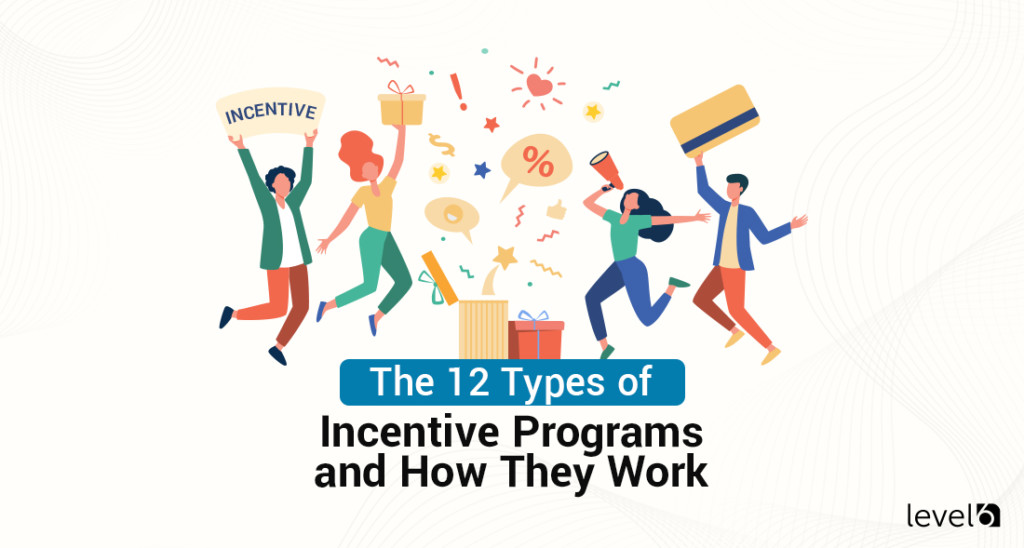Implementing an incentive program– whether a salesperson incentive program, an employee recognition program, or a customer loyalty program– can be an excellent tool to help your brand meet its goals. By offering appealing incentives, you can encourage specific behaviors that allow your team and organization to thrive and grow.
At the same time, all incentive programs aren’t created equal. You’ll want to follow several best practices when designing and carrying out an incentive program to get the best ROI and achieve your desired goals.
What are some of the most common reasons that incentive programs fail? What can you do to avoid this outcome? Let’s take a look at what you need to know.
1. Poor Communication
One of the most common ways that incentive programs fail is also one of the easiest problems to solve. If you aren’t creating a buzz around your new incentive program and spreading the word, there’s a good chance it won’t be a success.
Even if you’ve been making some announcements about the program, if there isn’t enough available information about how it works, you’ll likely find it isn’t as effective as you’d like it to be.
Beyond that, maybe you have been doing outreach in-person and virtually about your new program, but there’s inconsistent messaging coming from different parts of the organization. If this is the case, it can be difficult for participants to know exactly what they need to do in order to receive rewards and benefits.
It’s essential to deliberately create opportunities for people to get excited about your incentive program and help them understand why engagement is well worth the effort. The last thing you want is for participants to be left in the dark or feel like the program is in any way mysterious. Creating a strategy for outreach regarding your incentive program can create a sense of anticipation and motivation that leads the program to success.
2. Vague Rules
Crystal clear guidelines and rules are essential to any successful incentive program. Leaving the rules of the program open to interpretation or otherwise not defining them clearly can lead to confusion, frustration, and, ultimately, demotivation.
Looking to learn more about an incentive, rebate
or reward program for your business?
Curious about costs?
Try our instant pricing calculator:
When the rules surrounding your program are vague, it can create unclear expectations about what needs to be done to receive the program’s benefits. It can also lead to a sense of unfairness, where a participant might do what they believe necessary to receive the reward only to find they don’t qualify. When they see that other people are being given the incentives, they could reasonably feel that they are being treated unfairly.
Furthermore, it can be hard to hold participants accountable when rules are unclear in an incentive program. Ambiguity can lead to miscommunications, conflict, and other negative repercussions that undermine the goals and purposes you intend to achieve through the incentive program.
Having clear goals is the starting point for every successful incentive program. Not only will you not be able to measure ROI and determine whether you’ve accomplished what you intended to without clear goals, but it will also lead to frustration, confusion, and potentially even resentment.
It can be tempting when you’re just getting started to aim very high when it comes to your goals. It’s typically better to start with reasonable expectations and work your way up to the loftier accomplishments you’re aiming for. This requires a clear sense of what is within reach and what isn’t quite achievable to begin with while also ensuring that all of the key players in your incentive program design are on the same page.
3. Untimely Payments
People typically need immediate feedback in order to be motivated to change their behavior. Even if you’ve designed the perfect incentive program for your organizational goals, you’ll find that it is unsuccessful if participants aren’t receiving their rewards in a timely fashion.
If you’re waiting a month to give people what they are owed, they will lose interest in the program and the behavior they need to perform to be rewarded.
When payments are delayed, people can get seriously unmotivated. They might start to wonder whether the benefits are really worth their extra effort and hard work, and it can even lead them to distrust the program altogether. Every day that goes by that they don’t receive the reward they earned, trust is eroding, and engagement is likely going down the hill with it.
It’s also important to understand that participants might be motivated by direct, immediate financial need. If they know that there is a deadline for reaching specific goals, they might be counting on a quick and immediate payout that they can use to meet their financial obligations or reach their own personal goals.
Finally, this can also put additional strain on the organization because participants might continuously be asking about when they should expect to receive their payments. Rather than having to field questions from frustrated employees or participants, make sure that you build timely payments into your incentive program structure.
While long-term incentive programs can be a great tool for upper-level employees, you’ll want to ensure you offer short-term programs to your sales and customer service teams. Rather than making a promise about a big gain down the road, set up a shorter timeframe for these teams and ensure that the turnaround on their payout is quick and easy.
4. Insubstantial Rewards
When you’re designing a rewards program, it’s essential that the benefit the participant is receiving is relative to their output. For example, no salesperson is going to be motivated to earn an extra $5 by pulling out all the stops to sell a $2500 item.
An essential part of any successful reward program is that the benefit must be worth the extra effort the participant must put in to reach the stated goals.
5. Not Offering Variety
While the other reasons on our list are applicable to nearly all incentive programs, this one is a bit more nuanced. In general, it’s important to recognize that people are motivated by different things. For this reason, it can be useful to mix things up a bit and offer a variety of rewards rather than simply rewarding participants in one specific way.
By understanding the diverse motivations that push people to put in their all, you can work to create an incentive program that motivates the largest number of people.
In general, cash is a highly effective motivator. However, if your incentive program is offering gift cards to a few select retailers, for example, you might find that engagement isn’t as high as you’d like. If a percentage of participants simply aren’t driven to put in extra work to gain a gift card to a specific store, you’re going to find your program is missing the mark.
6. Failing to Reward Top Performers
Making sure your incentive program is accessible to everyone is a great thing, but make sure your best performers aren’t being demotivated by comparison to the lowest common denominator.
There’s nothing wrong with offering some low-hanging fruit benefits that everyone on your team can strive for. However, those who are driven to go above and beyond can also use a little additional push to justify their extra effort.
By rewarding the cream of the crop, you’re creating a healthy spirit of competition within your organization. Ensure that the people outperforming the rest are recognized for this and rewarded for it.
Consider including a special prize or extra incentives for those who are going the extra mile. By creating tiers of incentives depending on performance, you’ll likely find that the entire group’s performance improves.
7. Poor Management
If you want your incentive program to succeed, effective management is essential. If participants aren’t being held accountable, it can reduce the credibility of the program, decrease motivation, and create a lack of focus among participants. Furthermore, people might start to believe the program is unfair due to an imbalance in who is held accountable. This can have a negative effect on morale surrounding the program and even lead to resentment and mistrust.
Essentially, poor management can cause an incentive program to fail in a long list of ways. It can mean that targets are missed, start to negatively influence the organizational culture, and lead to wasted resources. When participants aren’t held accountable for their performance, it could even lead some to cheat to receive rewards without putting in the necessary work.
8. Slow Customer Service
No matter what type of incentive program you’re running, you want to ensure that participants can have their questions answered quickly and effectively. For example, if you launched a customer loyalty program and a customer is confused about why they haven’t received their reward yet, it’s absolutely essential that their concerns are met with a timely, friendly response that directly answers their question.
Fast response time is key for incentive programs. In the above example, slow customer service could mean that you are actually creating the opposite response you intend to with your program. Rather than creating affinity and loyalty for your brand, you’ve created frustration and dissatisfaction with your brand in the eyes of the customer.
9. Clunky User Experience
In order to truly change people’s behavior by offering incentives, you have to make sure that the process they are required to go through is worth the benefit they expect to receive.
While this relates to the earlier point of making sure the rewards are substantial enough in relation to the goal that must be met, it also has to do with the more mundane aspects of the rewards program.
If receiving rewards from an incentives program requires that participants deal with a clunky, burdensome user experience, there’s a good chance the program won’t be as successful as it otherwise could be. If they have to fill out lengthy forms or submit tons of paperwork in order to get the perk they have worked hard for, some will likely decide it’s just not worth the trouble.
10. Letting a Program Get Stale
Even the best incentive programs can become stale and uninteresting to people when they run for too long. For this reason, it’s important to refresh and revamp your program from time to time. This can help keep people interested and engaged without risking the program losing its appeal.
No matter how stellar the benefits are of a program, people will stop seeing them as extraordinary when things stay static over time. What was once an exciting motivator is now just a part of the norm, meaning that participants can stop seeing the program as something worth putting their effort toward.
For example, let’s say you’re using a web portal as a part of your incentive program. Every year, quarter, or month, you might add new travel options and merchandise to help keep things fresh. Staying consistent with the timeline can ensure that participants will keep coming back in a scheduled way to see what new perks they can enjoy.
Incentive Programs That Offer the Best ROI
Since 2005, Level 6 has been a leader in custom incentive programs. We are committed to providing the best possible value when it comes to full-service incentive programs, with tools you can use to successfully develop and maintain the right program for your organization.
There are a lot of different pieces to the puzzle when it comes to managing an incentive program, which is why we offer fully managed solutions for brands. We take care of everything from submission verification to customer service, not to mention 1099 tax reporting.
At Level 6, we know that well-designed and maintained incentive programs can help take your brand to the next level. At the same time, we are all too aware of the ways that these programs can fail due to not following the best practices. That’s why we’d love to help you receive the return on investment you desire from your incentive programs.
Are you ready to get started? Schedule a call with us today to learn more! Additionally, if you ever have any questions, please feel free to let us know! We’ll gladly help you out however we can.

Claudine is the Chief Relationship Officer at Level 6. She holds a master’s degree in industrial/organizational psychology. Her experience includes working as a certified conflict mediator for the United States Postal Service, a human performance analyst for Accenture, an Academic Dean, and a College Director. She is currently an adjunct Professor of Psychology at Southern New Hampshire University. With over 20 years of experience, she joined Level 6 to guide clients seeking effective ways to change behavior and, ultimately, their bottom line.

 Demo
Demo











